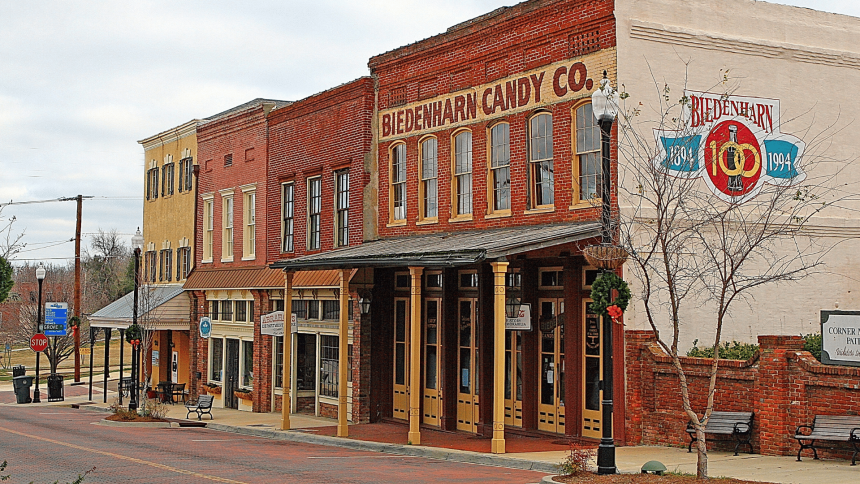Two new historical markers have been unveiled in downtown Vicksburg on First East and Adams Streets that highlight the city’s founding and earliest residential and commercial area.
The markers, which were paid for by the City of Vicksburg and the Vicksburg Convention and Visitors Bureau (VCVB), are titled “Newit Vick’s Original Vicksburg” and “Main Street Historic District and Amendment Area.”

“In dedicating these markers, we’re acknowledging our town’s rich history and, in a way, reflecting on how far we’ve come,” said Vicksburg Mayor George Flaggs, Jr. “People travel from all over the world to tour and experience Vicksburg, and these markers will help us continue telling our unique story long after all of us are here.”
Each marker has been strategically located along one of five existing Heritage Trail Walking Routes, a product of past local partnership with the National Park Service’s Lower Delta Initiative intended to showcase the history of Vicksburg.
“These new markers are a welcomed addition that will provide visitors with an added level of historic context as they tour our beautiful city,” said VCVB Executive Director Laura Beth Strickland. “On average, our Heritage Trail Walking Routes draw thousands of visitors a year. It’s always a great day when we’re able to partner with the City to make investments like these.”
One of the new markers reads, “Rev. Newit Vick came to this area, then known as Walnut Hills, in 1812, having purchased land from the U.S. government. He laid out the town of Vicksburg in the area bounded by First East Street, First North Street, South Street, and the Mississippi River. After Vick’s death from yellow fever in 1819, the town was divided into lots by his son-in-law, Rev. John Lane, and incorporated in 1825. The Main Street National Register Historic District includes what is considered Vicksburg’s earliest commercial and residential area.”
The Main Street National Register Historic District was listed on the National Register of Historic Places by the United States Department of the Interior in the late 1970’s and includes the earliest residential and commercial area in the city.
Many prominent citizens during the time period built residences in or near the area included in the Main Street Historic District, with the location being considered a “central and most eligible” residential location until 1876.
In the late 1980s, the Main Street Historic District was amended to include areas to the west and north of the original boundaries due to being, “architecturally significant as a cohesive neighborhood” and “for its concentration of well-preserved Greek Revival residences and 19th and early 20th century commercial and public buildings which show the evolution of residential architectural styles.”







